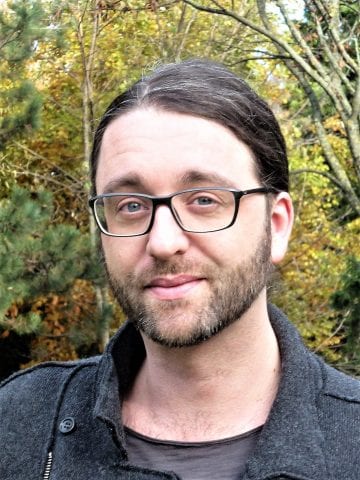“The East-Europeanization of Estonian Politics”

Lars Fredrik Stöcker,
Ph.D., Researcher,
Institute of East European History/Research Centre for the History of Transformations,
University of Vienna,
Austria
It is not often that Estonian politics makes international headlines. Interior Minister Mart Helme’s recent gaffe in an interview with the Russian Service of German broadcaster Deutsche Welle in mid-October, however, received news coverage far beyond Estonia. The founder of the Conservative People’s Party EKRE, which entered into a coalition with Prime Minister Jüri Ratas’s Centre Party in 2019, significantly increased the party’s electorate by resorting to a Eurosceptic and anti-immigrant rhetoric spiced with occasional homophobic slurs. Asked about EKRE’s goal to enforce a constitutional amendment recognizing marriage as a union between a man and a woman only through a popular referendum, Helme took a radical stance against what he called “homo propaganda”. Gay people might as well “run to Sweden”, where they would meet with a friendlier reception than in Estonia, which as part of Eastern Europe cherished different values.
The reference to Sweden was no coincidence, as the country openly supports and finances LGBT activism across the former Soviet bloc and has become a popular target of Polish and Russian right-wing campaigns using sexual minorities as political scapegoats. Helme’s comment was an allusion to the frequent portrayal of Sweden as the epitome of Western decadence, but it also recalled, unintentionally no doubt, the late Soviet practice of sending dissidents to Sweden instead of to Siberia. Tiit Madisson, the principal organizer behind a mass demonstration on the 48th anniversary of the signing of the Molotov-Ribbentrop Pact and its secret protocols in August 1987, which is widely considered as the starting point of the Estonian struggle for restored independence, was forced to emigrate to Sweden. A few months later, he was joined by former political prisoner Heiki Ahonen, who had signed a resolution announcing the intent to establish the Estonian National Independence Party in January 1988 and was subsequently flown out to Stockholm. Both Madisson and Ahonen continued to fight the Soviet regime as leading activists of the Relief Centre for Estonian Prisoners of Conscience, a human rights organization established by Ants Kippar in 1978.
Kippar was among the estimated 25,000 Estonians who reached the Swedish coast after their escape from the approaching Red Army across the autumnal Baltic Sea in 1944. This first major wave of incoming refugees in modern Swedish history is deeply rooted in Swedish and Estonian collective memory alike, and Stockholm’s refusal to extradite civilians to the USSR paved the way for strong ties between Sweden and Estonia across the Cold War divide. Anders Hedman, representative of the traditionally pro-Baltic Swedish Moderate Party in Tallinn, evoked the memory of Sweden’s historical significance as a refuge in a manifestation of support for Estonia’s LGBT community in front of the Estonian Parliament a few days after the Helme interview was aired. Sweden, as the leaflet that Hedman distributed read, would be happy to welcome “gay refugees” from Estonia in 2020 just as it sheltered war refugees from across the Baltic in 1944. If Estonia’s Interior Minister, in turn, would consider to invite Swedish homophobes to compensate the demographic loss, the population exchange might become a “win-win case” for both sides.
Mart Helme’s open hostility towards LGBT-friendly legal changes such as the adoption of the Registered Partnership Act in 2014 contradicts Estonia’s long-cultivated Nordic self-image, which served as a counterweight to the perceived stigma of being a post-Soviet country. Accordingly, Helme’s statements received support from an unexpected corner. On social media pages, Estonia’s Russophone community applauded the anti-LGBT stance of EKRE, which despite its ultranationalist ideology has started to look out for value-based commonalities across ethnic divides. Helme thus might indeed have succeeded in mobilizing additional votes, but the general response to his gaffe was critical. Rait Maruste, formerly President of the Estonian Supreme Court, warned of the danger of playing into the hands of revisionist forces across the eastern border, stating that Helme’s envisioned Eastern European canon of values in fact was nothing more than a relic of Soviet hegemony in the region and a proof of the longevity of the “Communist-orthodox mentality”. Helme did not succumb to the public pressure to resign, but his insinuations about voter fraud in the U.S. presidential elections in early November eventually cost him his position. He will, however, be remembered as a living emblem of the still unsolved tension between the vision of Estonia as a liberal-democratic, Western-type nation and its ethnocentric, illiberal counterdraft. While Estonia’s Nordic orientation remained uncontested for much of what we commonly call the post-socialist era, which is slowly receding into the past as a period of fundamental political and economic realignment, Sweden in particular has lost much of its significance as a role model, not only economically, but also politically in view of the government’s inability to cope with the escalating crime rates as a consequence of uncontrolled mass immigration and segregation. The battle over values, which has succeeded the war of ideologies of the past century, sometimes makes unlikely bedfellows, and social conservative and nationalist ideologies might indeed open up for new regional alliances beyond the post-Cold War regionalization processes of the transformation era.
E-mail: lars.fredrik.stoecker@univie.ac.at
Expert article 2853
> Back to Baltic Rim Economies 4/2020
To receive the Baltic Rim Economies review free of charge, you may register to the mailing list.
The review is published 4-6 times a year.
